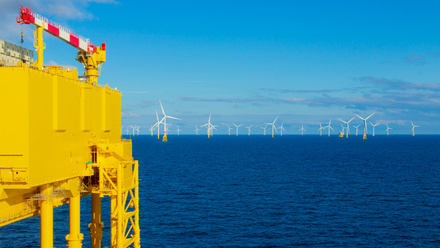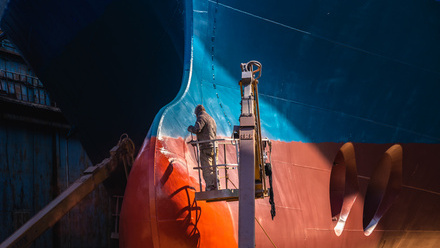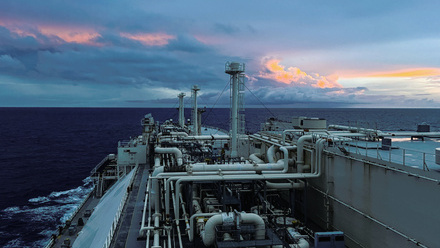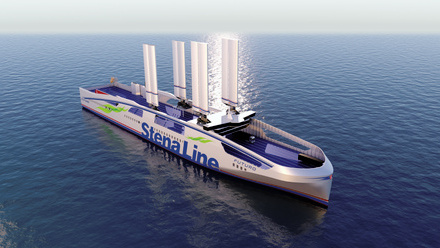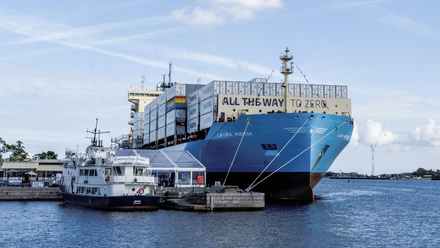Factoring Biofouling into the Design of Floating Wind Farms
With floating wind farms set to be a major source of renewable energy, John Lewis from our Biofouling Management Special Interest Group explains how their development could be compromised by marine organisms colonising their underwater components – a process known as biofouling. Fortunately, the shipping industry has spent decades tackling biofouling on ships' hulls and can offer valuable insights, as well as proven technologies that can be adapted to the floating wind sector at the design stage.
First, let’s look at some biofouling basics. Biofouling begins within minutes of a surface being submerged in seawater, when organic and inorganic materials adsorb onto the surface. Over the following hours and days, a microbial community is established (known as microfouling), which comprises bacteria, microalgae, and protozoa. This is followed by the settlement of larger, visible organisms (known as macrofouling).
First, one can see small, fast-growing species, then larger, slower growing, and longer-lived species that displace or overgrow the primary colonisers. Depending on the environment, mature biofouling communities may include dense colonies of bivalves like mussels and oysters, long fronds of kelp, or hard coral.
It’s also worth noting that rates of accumulation, abundance and diversity of biofouling generally decrease with increasing distance from shore and water depth. This is largely due to the distance from breeding populations and the limited survival time of algal spores and free-swimming larvae. Exceptions to this rule are the goose barnacles, which live close to the surface in the open ocean, and bottom dwelling fauna whose larvae are spread in bottom currents.
However, although biofouling abundance may initially be lower on turbines distant from shore, once established, they can begin to self-propagate and increase biofouling rates.
Biofouling and floating wind
So, what are the potential effects of biofouling on wind farms? Floating wind structures consist of the turbine tower fixed to a floating base. This means that the weight of biofouling becomes important, as does the hydrodynamic drag from currents and waves, and these need to be factored into the design to ensure the floating bases are stable.
Soft biofouling, such as seaweeds and soft-bodied invertebrates, has a Specific Gravity (SG) close to that of water (~1.0), and therefore has little impact on buoyancy, whereas hard biofouling, like barnacles, molluscs, and corals, can significantly increase the load. These organisms build shells that are primarily made of calcite, which has an SG of around 2.2.
The impact of the added weight from hard biofouling depends on the size and design of the structure. While small buoys have been known to sink under excessive biofouling, larger platforms like Floating Production Storage and Offloading (FPSO) vessels remain unaffected. For floating wind farms, determining the tipping point between these extremes is essential during the design stage.
Tech transfer for floating wind
Methods of biofouling management are mostly based on creating surfaces that prevent or deter the attachment of algal spores or invertebrate larvae. The most common method is the application of biocidal antifouling coatings that continuously release biocide through the coating surface. However, the life of these coatings is limited by the size of the initial biocide content of the coating when it is applied, and a chemical mechanism to enable the continuous release of this biocide.
The effective life of an antifouling coating on a ship can be from as little as 24 months and rarely surpass 90 months. The longest lives are achieved on continuously active and faster vessels, which helps deter the growth of organisms, but this performance is difficult to achieve on static structures such as a floating wind turbine.
This poses a challenge for static structures like floating wind turbines, which are designed for lifespans of 10–20 years.
A potential solution is to use foul release coatings, which contain little or no biocide, but have surfaces that deter or minimise the strength of adhesion of biofouling organisms. Organisms that do attach are dislodged by turbulent water flow across the surface, or when the weight of biofouling exceeds the adhesive strength of the basal organisms. These coatings may offer longer-lasting protection, but their effectiveness on floating wind platforms remains to be proven through further research and in-situ trials.
One thing is for sure – floating wind projects are moving closer to implementation, so now is the time to assess how biofouling could impact their performance. Early consideration of these factors will allow designers to incorporate effective mitigation strategies from the outset, bringing us one step closer to realising reliable, long-term offshore wind energy solutions.

